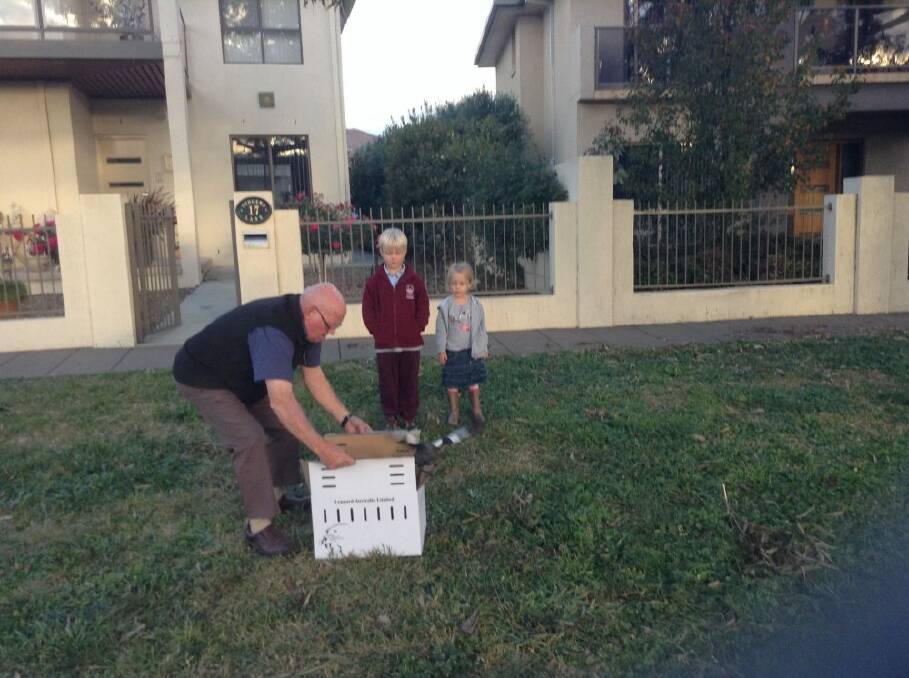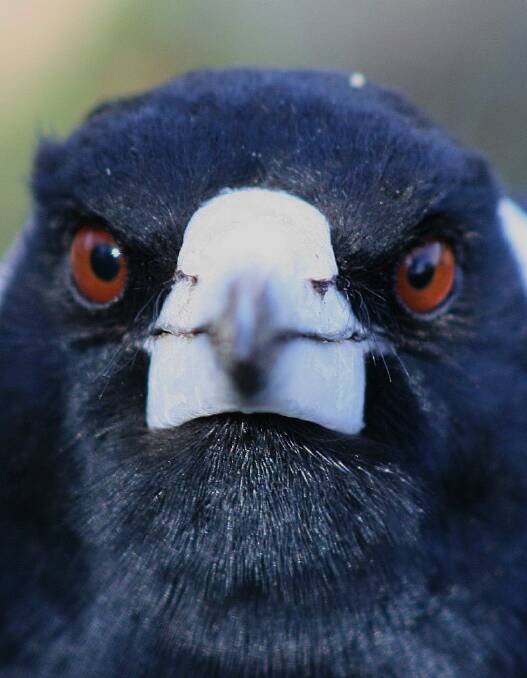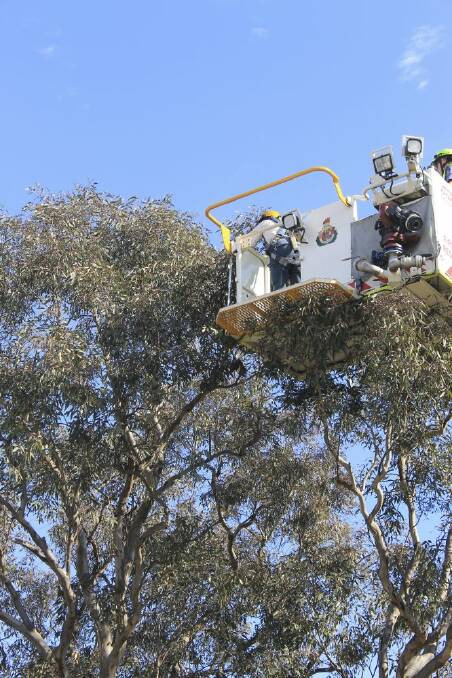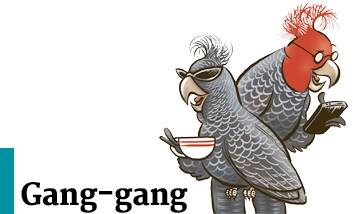Magpie-loving Canberrans! Can it be that some of that hard-to-put-into-words fondness and admiration we have for magpies is a cousin of what lots of Australians admire about Ned Kelly? Back to this stimulating idea in a moment.
Subscribe now for unlimited access.
or signup to continue reading
Meanwhile, we report that although the streets of pioneering Harrison in pioneering Gungahlin are not yet so much tree-lined as sapling-lined, there is the occasional grown-up tree and last Thursday a young celebrity magpie, released on the ground, was quick to flutter up into one of these grown ups.

Coincidentally, just as this magpie alighted on a Harrison branch, a new book about Australian birds, with lots to say about magpies, alights on this columnist's desk. The book is biologist Tim Low's Where Song Began – Australian birds and how they changed the world.* We will wing our way back to it in a moment.
Meanwhile, the Harrison spectacle warmed the hearts (and all the other giblets) of the human onlookers because this was the much-reported fledgling magpie that 10 days ago had to be so newsworthily rescued by firemen using their state-of-the-art Bronto aerial appliance. The fledgling had been seen dangling and flapping, one leg caught in string, from an uppermost branch. Its proven ability, on its release, to zoom up into a tree was proof that it was hale and well. When first rescued, it was taken to the RSPCA shelter, with great fears being held for it because the snared leg had taken a terrible hammering and stretching. The bird was at first what the tabloids would call ashen-faced. But at the RSPCA it got its colour back and was soon perching quite solidly. Last Thursday, RSPCA officers took it for re-release back to the scene of the original drama so that Harrison locals Dennis and Sandra Kelly, original reporters of the dangling fledgling's plight, could take part in its release. The Kellys, bless them, earlier this year took part in the successful rescue (reported here with pictures of breathtaking cuteness) of a tawny frogmouth chick that had fallen out of the irresponsibly fragile nest its parents had provided for it.

Would we go to such lengths (firemen, rangers, vets!) to rescue and restore a bird of just any species that was suffering a plight like the one Harrison fledgling? Perhaps not. Magpies do seem especially endearing and although Tim Low's book is overwhelmingly, excitingly science-based, he does allow himself the occasional flight of fancy.
One of those, he reiterated in conversation with us, is that "ours is a country founded on egalitarianism, on a convict disdain for subservience" [like Ned Kelly's] and so we love the swagger and boldness of the magpie.
"It's the swagger of the little guy going up to the big guy. They march right up to people at a barbecue and say [with their body language and sometimes too with their flute-like song] 'Give me some food'. If any Australian animal is beholden to none, it's this one."
He quotes naturalist George Bennett, who in 1856 wrote the of the magpie: "It is a bird of much importance in its own estimation. It struts about quite fearless of danger, and evinces, on many occasions, great bravery."

Some of the exciting assertions in the book have to do with the author's theories that Australian birds are more intelligent, more aggressive, more loud and live more complex social lives than most other birds of most other lands. He gives scientific explanations of why this is surely so and in subservient deference (of a kind magpies never show) to his anxious publishers (for the book isn't formally published until later this month) we won't report much of that today. But he does assert that "extreme behaviour in birds [in aggression and in shouting and raving] is more likely in Australia than anywhere else because its songbirds have been diversifying for so long ... magpies, wattlebirds, bowerbirds and lyrebirds represent four different outcomes when, given enough time, song birds reach great size."
And magpies are fine examples of the unusual aggression (especially among birds, between species) you find in chunky Australian songbirds. Every Canberran will have seen magpies monstering other species. And in New Zealand, where they were imported in the 19th century, magpies are known to attack 40-odd other bird species but also hedgehogs, rabbits, possums, cats, dogs, sheep, cars and, understandably, model planes.

Meanwhile, the Harrison magpie (in our picture being released by Dennis Kelly while the Kelly grandchildren look on) was taken in a box right up the foot of the tall tree where catastrophe befell it. Magpies were in and around the tree at the time of the youngster's release.
"Off it flew up into the tree," Sandra Kelly reports.
It seemed to go straight back into the embrace of its extended family, from where let's hope it goes on to live a life of disdain for subservience.
- Tim Low's Where Song Began, a stimulating, informative read for citizens of our bird-rich metropolis, will be published by Penguin on June 25.

